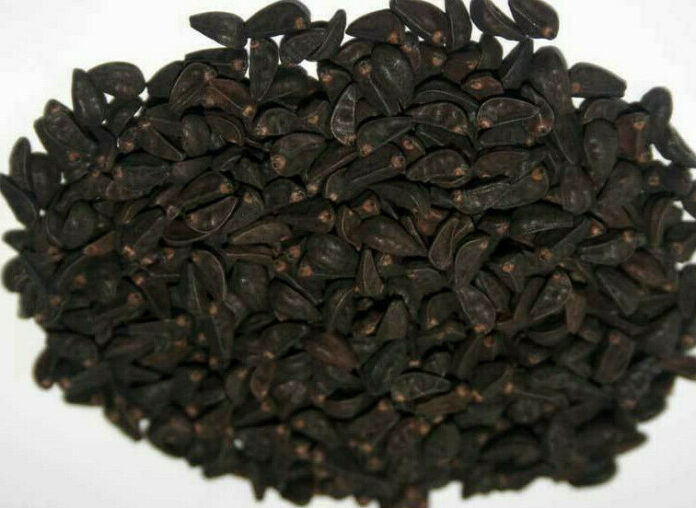INTRODUCTION:
Morning glory, commonly known as morning glory, is a genus of flowering plants in the family Convolvulaceae. The seeds of Pharbitis, particularly Pharbitis nil (syn. Ipomoea nil), are notable for both ornamental and medicinal uses. Native to Asia, Pharbitis has been cultivated for centuries for its striking, trumpet-shaped flowers and vigorous climbing habit.

English: Morning Glory Seeds
Chinese (中文): 牵牛子 (Qiān niú zǐ)
Japanese (日本語): 朝顔の種 (Asagao no tane)
Korean (한국어): 나팔꽃 씨 (Napalkkot ssi)
Hindi (हिन्दी): कालादाना (Kala Dana)
Urdu (اردو): کالا دانہ،تخم نیل
Sanskrit: कृमिघ्न (Krumighna)
Tamil (தமிழ்): கணவாய் விதைகள் (Kaṇavāy vithaikaḷ)
Arabic (العربية): بذور مجد الصباح
French: Graines de volubilis
HEALTH BENEFITS:

Cancer Treatment:
Studies indicate that Pharbitis seeds may have a suppressive effect on mutated KRAS-driven colorectal cancer cells. Specifically, they have been shown to suppress cancer cell proliferation, induce apoptosis (programmed cell death), cause cell cycle arrest, and reduce the phosphorylation of AKT and mTOR, important signaling molecules in cancer development.
Anti-inflammatory Effects:
Pharbitis seeds may possess anti-inflammatory properties, potentially aiding in the management of inflammatory conditions.
Other Potential Benefits:
Research also suggests potential benefits in renal protection, neuroprotection, insecticidal activity, and antioxidant activity.
Important Considerations:
Toxicity:
While traditionally used, it’s important to note that Pharbitis seeds can be toxic in large doses and should be used under the guidance of a qualified healthcare professional.
Bioactive Compounds:
The specific bioactive compounds responsible for the various effects of Pharbitis seeds are not fully understood, requiring further research to identify and isolate them for better utilization in clinical practice.
Quality Control:
Ensuring the quality and safety of Pharbitis seeds is crucial, and imperfect quality standards need to be addressed.
Menstrual Regulation
Used in traditional medicine to address menstrual disorders and amenorrhea.
Skin Disorder Relief
Sometimes used externally (in processed form) for treating boils and sores.
Fertility and Contraception (Traditional Use)
In some systems, high doses are believed to have contraceptive or fertility-modifying effects (used with caution).
SIDE EFFETS:

Severe Diarrhea
Due to strong laxative properties, overuse can cause intense purging, leading to dehydration.
Abdominal Pain & Cramping
Can irritate the digestive tract, resulting in stomach discomfort or pain.
Nausea & Vomiting
Ingesting large or improperly prepared doses may cause gastrointestinal upset.
Dehydration
Excessive purging or urination can lead to fluid and electrolyte imbalance.
HOW TO USE:

1. Traditional Chinese Medicine (TCM) Usage
- Form: Dried and powdered seeds
- Dose: 3–6 grams per day (in decoction or pills)
- Preparation:
- Crushed or powdered before decoction
- Sometimes roasted to reduce toxicity and harsh effects
- Often Combined With:
- Da Huang (Rhubarb)
- Chen Pi (Tangerine peel)
- Gan Cao (Licorice root)
- Functions:
- Treats constipation, edema, parasitic infections, and abdominal distention
2. Herbal Decoction Method
Measure: Use about 3–6 grams (dried seeds)
Crush: Slightly crush the seeds for better extraction
Boil: Simmer in water (1–2 cups) for 20–30 minutes
Strain and Drink: Take once daily on an empty stomach
Limit Use: Use for a short duration only (1–3 days max) under guidance
3. Powdered or Pill Form
- Some traditional formulas use powdered seeds in small doses blended with other herbs
- Also available as part of patent medicines in East Asian pharmacies
4. External Use (Less Common)
- Powdered seeds may be made into a paste for treating boils or skin conditions
- Rare and used only in folk medicine with caution.
⚠️ Cautions
- Avoid during pregnancy
- Do not exceed recommended doses
- Not for long-term use
- Can interact with other medications or herbs




